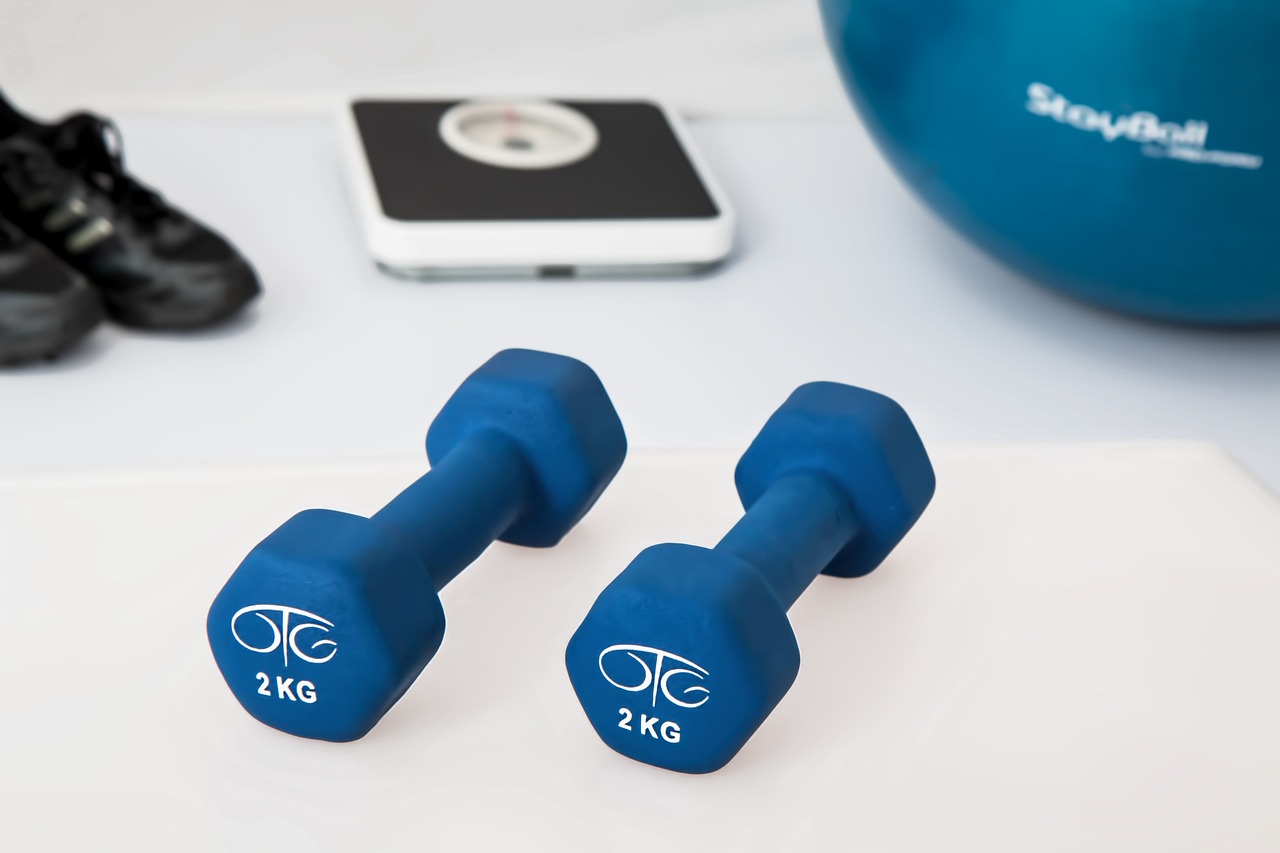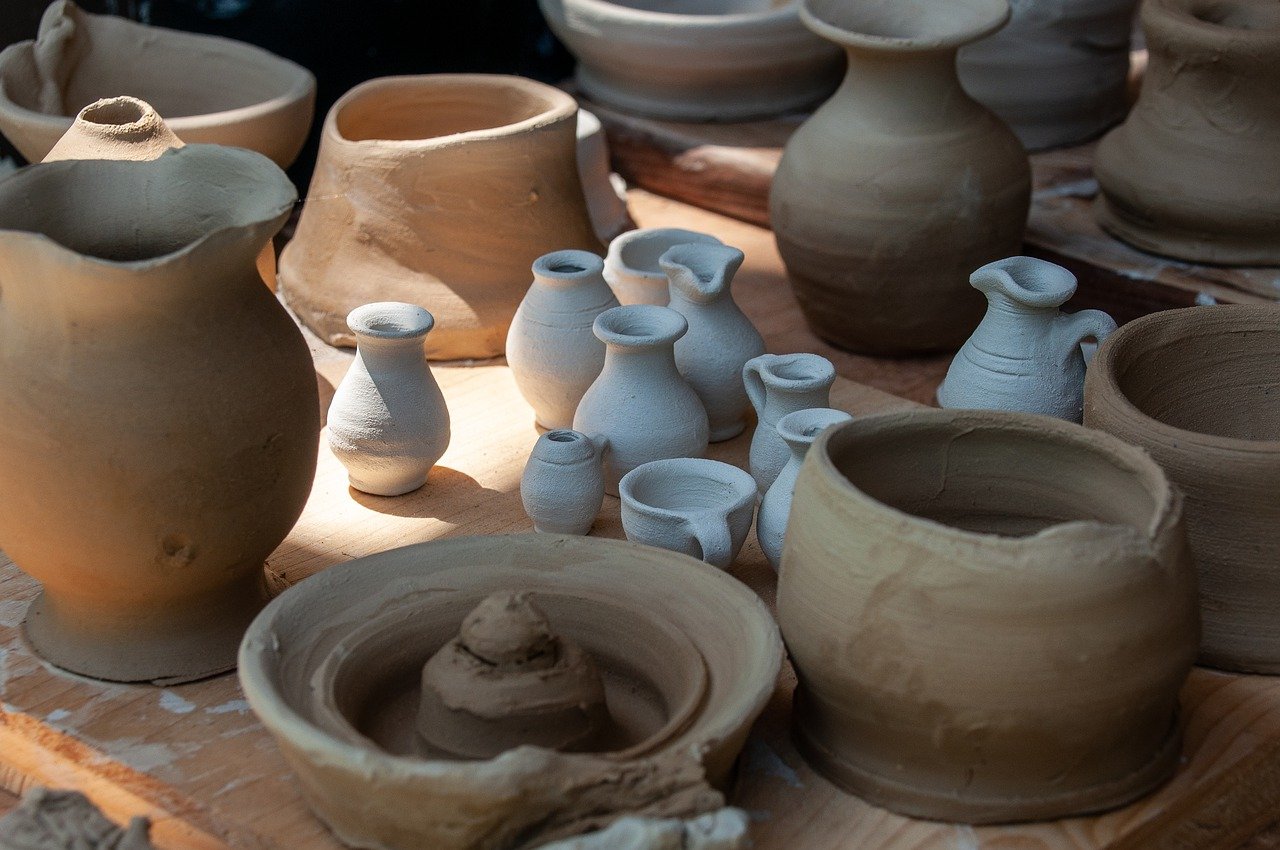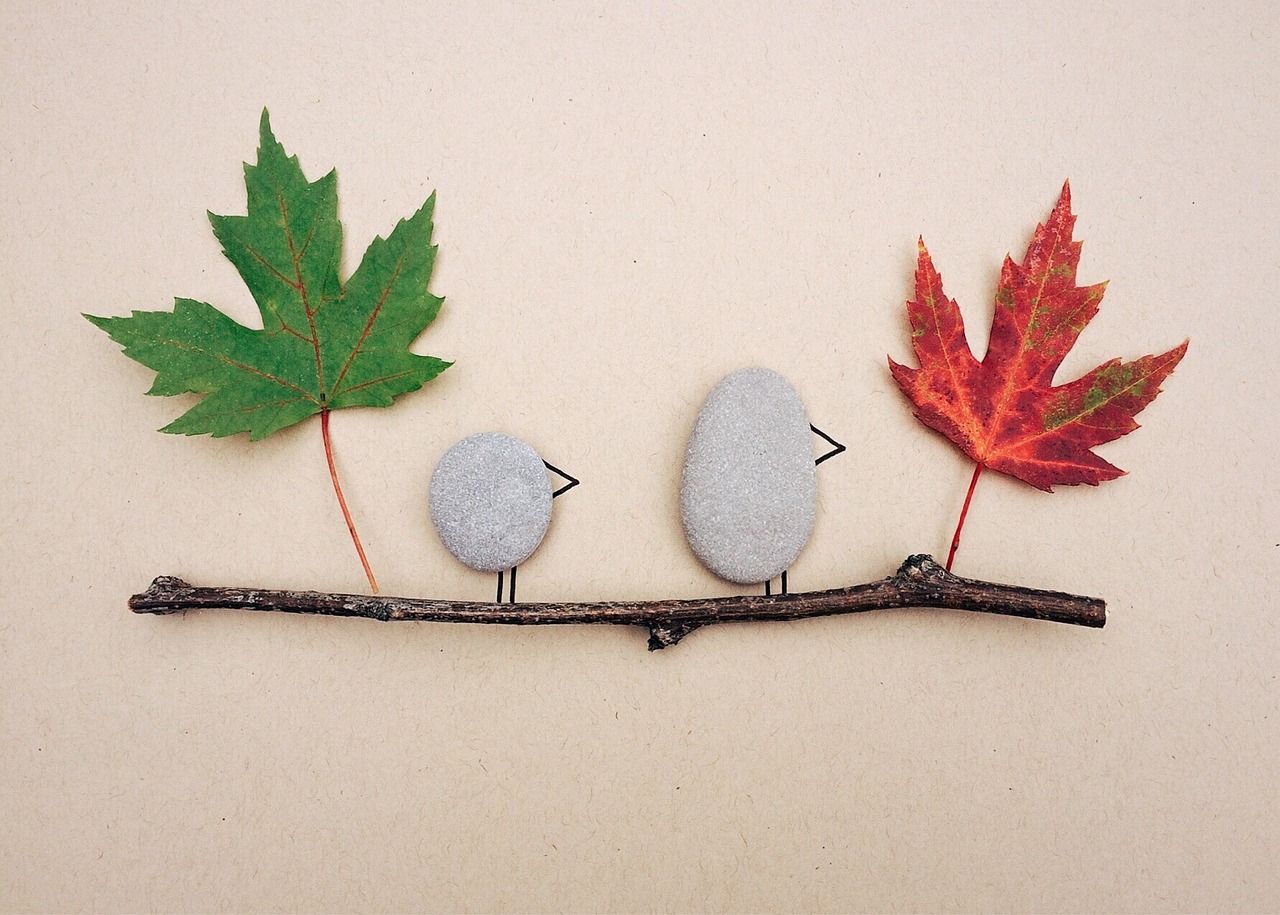Learn About Health and Hygiene with Crafts for Kids
In today’s world, teaching children about health and hygiene is more important than ever. With the rise of germs and illnesses, it's essential to equip our little ones with the knowledge and habits they need to stay healthy. But how can we make these lessons engaging and fun? Enter the world of crafts! Crafting is not just a delightful way to spend time; it also serves as an effective medium for learning. By incorporating creativity into health education, we can foster a love for cleanliness and well-being in children.
Imagine a classroom buzzing with excitement as children create their own soap or design colorful posters about dental hygiene. These activities not only spark creativity but also instill valuable lessons that stick with them for a lifetime. When kids engage in hands-on projects, they are more likely to remember the importance of washing their hands or brushing their teeth. So, let’s dive into the importance of health education and explore some fun craft ideas that will help children learn about hygiene in a memorable way.
Understanding health education is crucial for children. It sets the foundation for lifelong healthy habits, empowering kids to make informed choices about their health and hygiene. By introducing concepts like proper handwashing techniques, dental care, and personal cleanliness at an early age, we are helping them build a strong framework for their future. Children who grasp the significance of hygiene are less likely to fall ill and more likely to take responsibility for their well-being.
Moreover, health education promotes awareness about germs and how they spread. It can be a real eye-opener for kids to learn that simple actions, like washing hands or brushing teeth, can prevent diseases. This understanding can be enhanced through engaging crafts that make the learning process enjoyable. So, what are some fun craft ideas that teach hygiene awareness? Let’s explore some creative projects!
Crafts can be an enjoyable way to teach hygiene. This section presents creative projects that help kids learn about washing hands, dental care, and personal cleanliness. Each craft is designed to be interactive and engaging, ensuring that children not only learn but also enjoy the process. Here are a couple of standout ideas:
Handwashing is essential in preventing illness. Explore interactive craft ideas that encourage kids to practice proper handwashing techniques through fun and engaging activities. One of the most exciting ways to teach this is through DIY soap making. Children can create their own soap, which allows them to learn about cleanliness while enjoying a hands-on experience. This craft combines creativity with practical hygiene lessons, making it both educational and fun.
Creating soap can be a delightful experience for kids. They can choose their favorite colors and scents, turning a simple hygiene product into a personalized creation. This not only teaches them about the importance of cleanliness but also gives them a sense of ownership over their hygiene routine. Plus, it’s a fantastic way to introduce them to basic chemistry concepts!
Incorporating music into crafts enhances learning. Kids can create visuals or instruments to accompany handwashing songs, making the hygiene routine fun and memorable. For instance, they could design a poster featuring the lyrics of their favorite handwashing song, or even create a simple tambourine to use while singing. This combination of music and craft can make the concept of handwashing stick in their minds.
Dental hygiene is vital for overall health. This section offers craft ideas that promote good oral care habits, encouraging kids to brush and floss regularly. For example, children can create a giant tooth model using paper mache, which can serve as a fun visual aid to demonstrate proper brushing techniques. They can even use play dough to fashion dental tools, making the learning process interactive and enjoyable.
Artistic expression can reinforce health messages. Discover how various art projects can effectively teach kids about health and hygiene in a fun and engaging manner. For instance, creating posters and collages allows children to visualize health concepts. This craft encourages teamwork and creativity while reinforcing important hygiene messages. By working together on a project, kids can share ideas and learn from one another, enhancing their understanding of hygiene.
Creating posters and collages allows children to visualize health concepts. They can illustrate the steps of proper handwashing or the importance of brushing teeth. This craft not only promotes creativity but also encourages discussions about hygiene practices. Kids can display their artwork in the classroom or at home, serving as a constant reminder of the importance of health and hygiene.
Crafting storybooks about health and hygiene can spark children's imagination. They can illustrate and narrate stories that emphasize the importance of cleanliness and healthy habits. This approach not only fosters creativity but also helps children internalize the lessons they learn. By becoming the authors of their own health stories, kids take ownership of their learning experience.
Integrating science into craft activities enhances understanding. Explore how simple experiments and crafts can teach kids about germs, bacteria, and the importance of hygiene in an engaging way. For instance, a fun experiment could involve using glitter to represent germs. After sprinkling glitter on their hands, children can see how easily it spreads, making the invisible visible and driving home the point about handwashing.
Q: What age group is suitable for these crafts?
A: These crafts are ideal for children aged 4-12, with modifications available for different skill levels.
Q: How can I ensure the crafts are safe for kids?
A: Always supervise children during crafts, especially when using materials like soap bases or scissors. Choose non-toxic and child-friendly supplies.
Q: Can these crafts be adapted for home use?
A: Absolutely! Many of these activities can be easily adapted for home use, making them perfect for family bonding time.

Importance of Health Education
This article explores engaging crafts that teach children the importance of health and hygiene, fostering creativity while instilling valuable lessons about cleanliness and well-being.
Understanding health education is crucial for children. It sets the foundation for lifelong healthy habits, empowering kids to make informed choices about their health and hygiene. Imagine a world where every child knows exactly how to take care of themselves—sounds amazing, right? By teaching kids about health from a young age, we equip them with the knowledge to navigate their own well-being as they grow.
Health education isn't just about learning what to eat or how to wash hands; it encompasses a wide range of topics, including nutrition, physical activity, mental health, and hygiene practices. When children grasp these concepts, they are more likely to:
- Make healthier food choices: Understanding nutrition helps them choose fruits and vegetables over junk food.
- Engage in regular physical activity: Knowledge of the benefits of exercise motivates kids to stay active.
- Practice good hygiene: Learning about germs and cleanliness encourages habits like handwashing and dental care.
- Develop emotional intelligence: Recognizing mental health as part of overall health helps them manage their feelings.
Furthermore, health education can significantly reduce the risk of chronic diseases later in life. By instilling these lessons early, we can help children understand the impact of their choices. For example, a child who learns about the importance of oral hygiene is more likely to brush their teeth regularly, reducing the risk of cavities and gum disease.
In schools, health education often takes a back seat to subjects like math and science. However, it's essential to integrate health topics into the curriculum. Schools can create a supportive environment where children feel safe discussing health issues and asking questions. This environment promotes a culture of health and well-being that extends beyond the classroom.
In conclusion, the importance of health education cannot be overstated. It is a fundamental building block for a healthier future, enabling children to make informed decisions that will benefit them throughout their lives. By fostering a deep understanding of health and hygiene, we are not just teaching kids; we are nurturing a generation that values their well-being.
Crafts can be an enjoyable way to teach hygiene. This section presents creative projects that help kids learn about washing hands, dental care, and personal cleanliness.
Handwashing is essential in preventing illness. Explore interactive craft ideas that encourage kids to practice proper handwashing techniques through fun and engaging activities.
Creating their own soap allows children to learn about cleanliness while enjoying a hands-on experience. This craft combines creativity with practical hygiene lessons.
Incorporating music into crafts enhances learning. Kids can create visuals or instruments to accompany handwashing songs, making the hygiene routine fun and memorable.
Dental hygiene is vital for overall health. This section offers craft ideas that promote good oral care habits, encouraging kids to brush and floss regularly.
Artistic expression can reinforce health messages. Discover how various art projects can effectively teach kids about health and hygiene in a fun and engaging manner.
Creating posters and collages allows children to visualize health concepts. This craft encourages teamwork and creativity while reinforcing important hygiene messages.
Crafting storybooks about health and hygiene can spark children's imagination. They can illustrate and narrate stories that emphasize the importance of cleanliness and healthy habits.
Integrating science into craft activities enhances understanding. Explore how simple experiments and crafts can teach kids about germs, bacteria, and the importance of hygiene in an engaging way.
Q: Why is health education important for kids?
A: Health education is crucial as it lays the groundwork for lifelong healthy habits, helping children make informed health choices.
Q: What are some fun ways to teach kids about hygiene?
A: Engaging crafts, interactive activities, and songs can make learning about hygiene enjoyable for kids.
Q: How can parents reinforce health education at home?
A: Parents can incorporate discussions about health during meals, engage in health-related activities, and model good hygiene practices.

Fun Craft Ideas for Hygiene Awareness
Crafting isn’t just about creating something beautiful; it’s also a fantastic way to teach kids about essential topics like health and hygiene. When children engage in hands-on activities, they’re more likely to remember the lessons learned. In this section, we’ll dive into some exciting craft ideas that not only keep little hands busy but also instill a sense of responsibility towards personal hygiene. These activities can turn learning into a fun adventure, making it easier for kids to grasp the importance of cleanliness.
One of the most effective ways to introduce hygiene practices is through interactive crafts that focus on handwashing. For instance, kids can create their own handwashing charts using colorful paper, stickers, and markers. This chart can serve as a visual reminder of the steps involved in effective handwashing, such as:
| Step | Description |
|---|---|
| 1 | Wet hands with clean, running water. |
| 2 | Apply soap and lather well. |
| 3 | Scrub all surfaces for at least 20 seconds. |
| 4 | Rinse hands thoroughly under clean water. |
| 5 | Dry hands using a clean towel or air dry. |
Another engaging activity is DIY soap making. Kids can learn about the ingredients that go into soap and why they are important for keeping germs at bay. This hands-on experience not only teaches them about cleanliness but also encourages creativity as they can choose colors, scents, and shapes for their soap. Imagine the excitement on their faces when they create a bar of soap that they can actually use!
Music can also play a vital role in reinforcing hygiene practices. Handwashing song crafts can be a delightful way to combine art and learning. Children can create their own instruments or visuals to accompany catchy handwashing songs. By singing along while washing their hands, they’ll remember to scrub for the right amount of time, making the process enjoyable rather than a chore. This method not only enhances their memory but also transforms a mundane task into a fun routine.
Lastly, don’t forget about dental hygiene! Crafting can also be applied to teach kids about taking care of their teeth. For example, kids can make toothbrush holders decorated with their favorite characters or colors. This personal touch encourages them to keep their toothbrushes clean and organized. Additionally, creating a dental health poster can help them visualize the importance of brushing and flossing. They can include fun facts, drawings, and even their own tooth-brushing schedule!
In summary, incorporating crafts into hygiene education not only makes learning fun but also ensures that kids grasp the significance of maintaining their health. By engaging in these activities, children will develop a sense of ownership over their hygiene practices, paving the way for a lifetime of healthy habits.
Q1: How do crafts help teach kids about hygiene?
Crafts engage children in hands-on activities, making learning interactive and memorable. They can visualize and practice hygiene concepts through creative projects.
Q2: What age group is best for these craft activities?
These craft ideas are suitable for children aged 4 to 10. Adjustments can be made for older kids to include more complex projects.
Q3: Can these crafts be done at home or in a classroom setting?
Absolutely! These crafts are versatile and can be easily adapted for home or classroom environments, making them perfect for both settings.
Q4: Are there any safety considerations when doing these crafts?
Always supervise young children, especially when using scissors or other crafting tools. Ensure that all materials are non-toxic and safe for kids.

Handwashing Craft Activities
Handwashing is one of the simplest yet most effective ways to prevent illness, and what better way to teach this vital lesson than through fun and interactive crafts? Engaging children in hands-on activities not only makes learning about hygiene enjoyable but also reinforces the importance of cleanliness in a memorable way. Imagine your child excitedly participating in a craft that doubles as a lesson on proper handwashing techniques—it’s a win-win!
One popular craft idea is the DIY Handwashing Chart. This project allows kids to create a visual reminder of the steps involved in washing their hands correctly. Using colorful paper, markers, and stickers, children can design a chart that outlines the handwashing process. They can include steps like:
- Wet hands with clean, running water
- Apply soap and lather for at least 20 seconds
- Rinse thoroughly under clean water
- Dry hands using a clean towel or air dry
Once completed, hang the chart in the bathroom or kitchen as a constant reminder of the importance of hand hygiene. To make it even more engaging, parents can encourage their kids to decorate the chart with drawings of germs and soap bubbles, bringing a fun, creative twist to a serious topic.
Another exciting activity is the Handwashing Song Craft. Music has an incredible ability to enhance memory retention, so why not incorporate a catchy handwashing song into your craft? Kids can create simple instruments using recycled materials, such as shakers made from plastic bottles filled with rice or beans. As they sing along to the handwashing song, they can practice the motions of washing their hands, making the routine feel less like a chore and more like a fun game.
For those who enjoy a bit of science with their crafts, consider creating a Germ Experiment Station. This involves using glitter or colored powder to represent germs. Have the kids spread a small amount of glitter on their hands and then attempt to wash it off using the steps they’ve learned. This visual representation of how germs can linger even after washing will drive home the importance of thorough handwashing. It’s a fun experiment that not only entertains but also educates!
In summary, handwashing craft activities are a fantastic way to instill important hygiene habits in children. By making the learning process engaging and interactive, kids are more likely to remember and practice these essential skills. So gather your craft supplies, put on some music, and get ready to turn handwashing into a fun and educational experience!
Q: How often should children wash their hands?
A: Children should wash their hands regularly, especially before meals, after using the restroom, and after playing outside. It's a good habit to instill from a young age!
Q: What materials do I need for handwashing crafts?
A: Basic craft supplies like paper, markers, glue, scissors, and recycled materials for instruments are great starting points. You can also use glitter to represent germs in experiments.
Q: Can these crafts be done in a classroom setting?
A: Absolutely! These crafts are perfect for classroom activities, as they promote teamwork and collaboration among students while teaching them valuable hygiene practices.

DIY Soap Making
Creating your own soap is not just a fun craft; it’s a fantastic way for kids to understand the essence of cleanliness while engaging in a hands-on experience. Imagine the excitement on their faces as they mix ingredients, watch them transform, and then use their very own creations! This activity not only fosters creativity but also reinforces the importance of hygiene in an enjoyable way.
To get started, gather some basic supplies. You’ll need:
- Glycerin soap base (available at craft stores)
- Soap colorants (for fun colors)
- Essential oils (for a delightful scent)
- Soap molds (silicone molds work great)
- Microwave-safe containers (for melting the soap)
- Mixing spoons and spatulas
Once you have everything ready, the fun begins! Begin by cutting the glycerin soap base into small cubes. Kids can help with this step (with supervision, of course). Then, place the cubes in a microwave-safe container and heat them in the microwave. This is where the magic happens! As the soap melts, it becomes a gooey liquid, and the kids can marvel at the transformation. Make sure to stir it gently to avoid bubbles.
Next, it’s time to add color and scent. This is where kids can really let their creativity shine. A few drops of soap colorant can turn plain soap into vibrant creations, while essential oils can provide lovely fragrances. Encourage the kids to experiment with different combinations. For instance, lavender essential oil with purple colorant can create a calming lavender soap, while citrus scents can result in a bright and energetic orange soap.
After mixing in the color and scent, pour the liquid soap into the molds. This step is particularly exciting for kids as they can see their creations take shape. Once the molds are filled, let them sit at room temperature for a few hours until they harden. The anticipation builds as they wait, but the reward is well worth it!
Once the soap is solidified, pop them out of the molds. Kids can now admire their handiwork, and they can even decorate the soap with labels or stickers, turning them into personalized gifts for family and friends. This not only promotes hygiene but also teaches the value of sharing and gifting.
Through this DIY soap-making activity, children learn about the importance of cleanliness in a fun and interactive way. They’ll understand that washing their hands with soap is essential in keeping germs at bay, making this craft a perfect blend of creativity and education.
Q: Is it safe for children to make soap?
A: Yes, as long as they are supervised during the melting process and using safe, kid-friendly ingredients.
Q: What if my child has allergies?
A: Always check the ingredients of the soap base and essential oils. You can choose hypoallergenic options to ensure safety.
Q: How long does it take for the soap to harden?
A: Typically, it takes about 1-3 hours at room temperature, but this can vary based on the size of the molds used.
Q: Can we add other ingredients like glitter or dried flowers?
A: Absolutely! Adding glitter or dried flowers can make the soap even more fun and visually appealing. Just ensure they are safe for skin contact.
DIY soap making is not just a craft; it’s an adventure in learning about health and hygiene that kids will remember for years to come!

Handwashing Song Crafts
Handwashing is a vital practice that can significantly reduce the spread of germs and keep children healthy. What better way to instill this important habit than through the power of music? not only make the learning process enjoyable but also help children remember the steps involved in proper handwashing. Imagine your little ones singing along while they scrub their hands—it's a win-win situation!
One engaging way to create a handwashing song craft is to encourage kids to write their own lyrics to a familiar tune. For example, they could use the melody of "Twinkle, Twinkle, Little Star" and modify the lyrics to include the steps of handwashing:
Wash your hands, scrub them well, With some soap, we can tell, Rinse them off, then dry them too, Now our hands are clean, woohoo!
By personalizing the song, children become more invested in the process, making it memorable. You can also enhance this activity by providing colorful craft supplies such as markers, glitter, and stickers. Kids can create their own visuals or posters that accompany the song. This not only reinforces the lyrics but also gives them a sense of ownership over their learning.
To take it a step further, consider making simple musical instruments like shakers or drums from household items. Kids can use these instruments to add rhythm to their handwashing song, turning it into a fun and interactive performance. This craft combines creativity, music, and hygiene education in a way that captivates young minds.
In addition, you might want to organize a mini talent show where children can perform their handwashing songs for family and friends. This not only boosts their confidence but also spreads awareness about the importance of hand hygiene in a fun and engaging manner. After all, who wouldn’t want to see a group of kids singing and dancing about washing their hands?
In summary, handwashing song crafts are an excellent way to teach children about hygiene while fostering creativity. By integrating music, visuals, and performance, you create a comprehensive learning experience that resonates with their playful nature. So grab those craft supplies, get ready to sing, and watch as your kids embrace the importance of handwashing with joy!
Q: Why is handwashing important for children?
A: Handwashing is crucial for preventing the spread of germs and illnesses. Teaching children to wash their hands properly helps them develop lifelong healthy habits.
Q: How can crafts help in teaching hygiene?
A: Crafts engage children in a hands-on way, making learning about hygiene fun and memorable. They can visualize and practice hygiene concepts through creative activities.
Q: What are some other fun hygiene crafts for kids?
A: Besides handwashing songs, kids can create dental health posters, personal hygiene collages, or even interactive storybooks that emphasize the importance of cleanliness.

Dental Health Crafts
When it comes to teaching kids about dental health, crafts can be a fantastic and fun way to engage them. After all, who wouldn't want to create something while learning how to keep their pearly whites shining? Dental hygiene is not just about brushing and flossing; it's about instilling a sense of responsibility in children regarding their oral care. Through creative projects, children can grasp the importance of maintaining good dental habits while expressing their artistic flair.
One exciting craft idea is to make toothbrush holders. Children can use materials like clay, cardboard, or even recycled bottles to design their own unique holders. This not only encourages them to keep their toothbrushes organized but also adds a personal touch to their oral hygiene routine. Imagine a colorful holder with their favorite cartoon character or a fun animal design! It’s a great way to make brushing teeth feel special and personalized.
Another engaging activity is creating a “Dental Health Calendar”. This craft allows kids to track their brushing and flossing habits. They can decorate each month with stickers, drawings, or pictures that represent good dental practices. For instance, they can draw a big smiley face for days they brush twice or add a sticker for days they floss. This visual representation not only makes the process enjoyable but also reinforces the idea of consistency in dental care.
To dive deeper into the concept of dental health, kids can create a “Tooth Fairy” craft. This could be a simple puppet or a small box where they can place their lost teeth. While crafting, you can share stories about the Tooth Fairy and emphasize the importance of taking care of their teeth so they can stay healthy and strong. This imaginative play can help children understand that losing teeth is a natural part of growing up, but it also serves as a reminder to care for the ones they still have.
For a more educational twist, consider a dental health poster project. Kids can create posters that illustrate the steps of proper brushing and flossing techniques. They can use colorful markers, magazines for cut-outs, or even print images from the internet to make their posters visually appealing. This not only reinforces what they learn about dental hygiene but also gives them a sense of accomplishment when they display their artwork at home or school.
In addition to these crafts, it’s essential to incorporate discussions about healthy eating habits and their impact on dental health. You can create a fun game where kids can categorize foods into “tooth-friendly” and “tooth-harming” lists. This can be done on a large poster or through a digital presentation, allowing them to visualize the connection between what they eat and their dental health.
Overall, dental health crafts provide a multifaceted approach to learning. They not only teach children the importance of taking care of their teeth but also encourage creativity and self-expression. By making dental hygiene fun and engaging, we can help children develop lifelong habits that will keep their smiles bright and healthy.
Q: Why are dental health crafts important for kids?
A: Dental health crafts make learning about oral hygiene fun and interactive, helping children to remember and practice good habits.
Q: What materials do I need for dental health crafts?
A: Common materials include paper, markers, glue, scissors, recycled items, and any other craft supplies you have at home.
Q: How can I encourage my child to maintain their dental hygiene?
A: Involve them in fun activities, like crafts, that emphasize the importance of brushing and flossing, and lead by example by maintaining your own dental health.

Creative Learning Through Art
Art is not just about splashes of color on a canvas; it's a powerful tool for learning and expression. When it comes to teaching kids about health and hygiene, incorporating art into the mix can make the lessons stick like glue. Imagine your child not only learning the importance of washing their hands but also expressing that knowledge through a vibrant painting or a lively collage. This fusion of creativity and education can turn mundane health lessons into exciting adventures!
One of the best ways to engage children is through projects that allow them to visualize health concepts. For instance, creating posters and collages can be a fantastic way to reinforce messages about hygiene. Kids can work together to design colorful posters that showcase the steps of proper handwashing or the importance of brushing their teeth. This not only fosters teamwork but also gives them a sense of ownership over their learning. By using bright colors and fun images, they can create eye-catching displays that can be hung around the house or in the classroom, serving as constant reminders of good hygiene practices.
Moreover, crafting interactive storybooks about health and hygiene opens up a world of imagination for children. They can create their own characters, plots, and illustrations that emphasize the importance of cleanliness. For example, a story could feature a superhero who saves the day by teaching kids how to wash their hands properly or a friendly monster who learns to brush its teeth. This narrative approach not only makes the learning process enjoyable but also helps kids internalize the lessons in a way that is relatable and memorable.
In addition to these projects, using various materials can enhance the learning experience. Consider using items like recycled paper, fabric scraps, and even natural elements like leaves and flowers. This not only makes the craft more interesting but also teaches children about sustainability and resourcefulness. For instance, when making a collage about germs, kids can use different textures to represent various surfaces, making the concept of cleanliness more tangible.
Art projects can also be enhanced by integrating technology. Kids can use digital tools to create virtual posters or storybooks, which can be shared with family and friends. This not only makes the craft more interactive but also exposes them to basic digital skills. Imagine the pride they'll feel when they present their digital creations, sharing the importance of hygiene with their peers!
Ultimately, the goal is to make learning about health and hygiene an enjoyable and engaging process. By using art as a medium, we can capture children's attention and ignite their creativity, all while instilling essential lessons that will last a lifetime. So, the next time you're looking for a way to teach your kids about cleanliness, grab some art supplies and get crafting!
- Why is art important in teaching health concepts? Art helps children visualize and internalize lessons, making them more memorable.
- What materials can I use for health-related art projects? You can use recycled materials, paper, fabric, and even digital tools!
- How can I encourage teamwork in these projects? Group activities, like creating posters or collages, promote collaboration and shared learning experiences.

Posters and Collages
Creating is not just a fun activity; it's an excellent way for children to visualize and internalize important health concepts. Imagine a group of kids huddled around a table, scissors in hand, glue sticks ready, and a plethora of colorful materials spread out before them. This scene is not only lively but also serves as a canvas for creativity and learning. As they craft, they are not merely cutting and pasting; they are engaging with the very principles of hygiene and health that we wish to instill in them.
One of the best aspects of this craft is its versatility. Children can create posters that highlight various hygiene practices, such as the importance of handwashing, brushing teeth, and maintaining personal cleanliness. These visual aids can serve as constant reminders in their daily lives. For instance, a poster illustrating the steps of proper handwashing can be hung in the bathroom, transforming a simple routine into an exciting and educational experience. The bright colors and engaging designs will catch their attention, making them more likely to remember the steps involved.
Moreover, collages allow children to express their understanding of health and hygiene through images and words. By using magazines, printed images, and their drawings, they can create a vibrant collage that tells a story about cleanliness. For example, a collage could depict a day in the life of a healthy child, showcasing activities like washing hands before meals, brushing teeth, and exercising. This not only reinforces the message but also encourages teamwork as kids collaborate on their projects, sharing ideas and materials.
To enhance the learning experience, consider incorporating the following elements into the poster and collage-making process:
- Research Together: Before starting, have a discussion about the health topics they want to cover. This can spark their interest and give them a sense of ownership over their projects.
- Use Creative Materials: Gather a variety of supplies—colored papers, markers, stickers, and even recycled items—to make the projects more engaging.
- Display Their Work: Once completed, hang their posters and collages in common areas at home or school. This not only boosts their confidence but also spreads awareness among peers.
In conclusion, posters and collages are more than just arts and crafts; they are powerful tools for teaching children about health and hygiene in an enjoyable way. By allowing kids to express themselves artistically, we help them grasp the significance of these vital concepts while nurturing their creativity. So, the next time you’re looking for an educational activity, gather some supplies and let the kids get crafting!
Q: How can I encourage my child to take hygiene seriously?
A: Engaging them in fun activities like crafts can make hygiene more relatable. Use visuals and hands-on projects to teach them the importance of cleanliness.
Q: What materials do I need for making posters and collages?
A: You will need colored paper, markers, scissors, glue, magazines for cutouts, and any other decorative items you can find around the house.
Q: Can crafting be combined with other learning subjects?
A: Absolutely! Crafts can incorporate elements of science, art, and even storytelling, making learning more holistic and engaging.
Q: How can I display my child's work?
A: Consider creating a dedicated wall or bulletin board at home where you can showcase their posters and collages. This not only celebrates their creativity but also serves as a constant reminder of the health messages.

Interactive Storybooks
Crafting about health and hygiene is a fantastic way to engage children while instilling essential lessons in a fun and imaginative manner. Picture this: your child, armed with colorful markers and a stack of blank pages, is about to embark on a creative journey that not only sparks their imagination but also teaches them the importance of staying clean and healthy. By illustrating and narrating their very own stories, kids can explore various health topics in a way that resonates with them personally.
These storybooks can cover a range of health themes, from the adventures of a brave toothbrush fighting off pesky plaque monsters to a heroic soap bar saving the day by washing away germs. The possibilities are endless! Not only does this activity promote creativity, but it also encourages children to think critically about their hygiene habits. They can create characters that represent different aspects of health, such as a friendly handwashing superhero or a wise old dentist who shares tips on keeping teeth shiny and strong.
To make the storybook creation process even more engaging, consider incorporating elements like:
- Illustrations: Encourage children to draw pictures that depict their stories. This visual representation helps reinforce the messages about health and hygiene.
- Interactive Elements: Add flaps, pop-ups, or even QR codes that link to videos demonstrating proper handwashing techniques or fun dental care tips.
- Storytelling Sessions: Host a storytelling session where kids can read their books to friends or family, fostering a sense of accomplishment and community.
By blending storytelling with health education, children not only learn about the importance of hygiene but also develop their reading and writing skills. This multifaceted approach can make the lessons stick, as they associate healthy habits with fun, memorable stories. Plus, parents can easily get involved by helping their kids gather materials, brainstorm ideas, or even share their own stories about health and hygiene. It’s a wonderful bonding experience that transforms learning into a delightful activity.
In summary, interactive storybooks serve as a powerful tool in teaching kids about health and hygiene. They offer a unique blend of creativity, education, and fun that can leave a lasting impact on children’s understanding of cleanliness and well-being. So, gather those art supplies, unleash your child’s creativity, and watch as they bring their health-themed stories to life!
Q: How can I encourage my child to participate in creating a storybook?
A: Start by sharing your own stories or experiences related to health and hygiene. Provide them with a variety of materials, such as colored pencils, stickers, and construction paper, to spark their creativity. You could also set aside a specific time each week for storybook creation to make it a fun routine.
Q: What themes should we focus on when making a health-related storybook?
A: Consider themes like handwashing, dental hygiene, healthy eating, and the importance of exercise. These topics can be woven into fun narratives that captivate your child’s interest while educating them about essential health practices.
Q: Can we incorporate other subjects into our storybooks?
A: Absolutely! You can integrate science by discussing germs and how they spread, or even math by counting the number of times we should wash our hands each day. The more interdisciplinary you make it, the richer the learning experience will be!

Incorporating Science into Crafts
Integrating science into crafts is a fantastic way to make learning about health and hygiene not just informative, but also exciting! Kids are naturally curious, and when you combine hands-on activities with scientific principles, it sparks their interest and deepens their understanding of important concepts like germs and bacteria. Imagine transforming a simple craft into a mini science experiment! For instance, creating a germ jar can be a thrilling project that visually demonstrates how germs spread and the importance of hygiene. By mixing water, glitter, and a few drops of soap, children can see how the glitter (representing germs) disperses in the water and how soap can help to eliminate them.
Moreover, you can turn everyday items into scientific tools. For example, using a magnifying glass during a craft session can help kids examine the tiny details of their projects, such as the texture of different soap bars or the surface of various materials. This not only enhances their observational skills but also allows them to discuss the role of cleanliness in preventing the spread of germs. By asking questions like, "What do you think happens to germs when we wash our hands?" you can encourage critical thinking and discussions about hygiene.
Another engaging activity is creating a bacteria culture plate. This simple project involves using agar and sterile petri dishes to grow harmless bacteria from everyday surfaces, such as doorknobs or kitchen counters. Children can learn how to properly collect samples and observe how bacteria thrive in different environments. By comparing the growth on various surfaces, they can visually understand the importance of cleaning and sanitizing their surroundings.
To further enrich the learning experience, consider incorporating a
| Craft Activity | Materials Needed | Learning Outcomes |
|---|---|---|
| Germ Jar | Water, glitter, soap | Understanding how soap eliminates germs |
| Bacteria Culture Plate | Agar, petri dishes, sterile swabs | Learning about bacteria growth and hygiene |
| Handwashing Experiment | Glitter, soap, water | Visualizing the effectiveness of handwashing |
Incorporating these science-based crafts not only makes learning fun but also instills a sense of responsibility in children regarding their health and hygiene. They become active participants in their learning journey, which can lead to a greater appreciation for the importance of cleanliness and health. So, gather your materials and let the experimentation begin!
Q: How can I make science crafts safe for my kids?
A: Always supervise children during science activities, use non-toxic materials, and ensure they understand safety precautions, especially when using items like agar or sharp tools.
Q: What age group is suitable for these science crafts?
A: These crafts can be adapted for various age groups. Younger children may need more guidance, while older kids can take the lead on experiments.
Q: Can these crafts be done indoors?
A: Yes! Most of these activities can be done indoors, just make sure to have a clean workspace and protective coverings for surfaces.
Frequently Asked Questions
- Why is health education important for kids?
Health education is crucial for kids because it lays the groundwork for lifelong healthy habits. By understanding the importance of hygiene and wellness, children can make informed choices that affect their overall health. It's like giving them a map to navigate their health journey!
- What are some fun crafts to teach kids about hygiene?
There are numerous fun crafts to engage kids in learning about hygiene! From DIY soap making to handwashing song crafts, these projects not only spark creativity but also instill essential lessons about cleanliness. Kids can create colorful posters or interactive storybooks that emphasize good hygiene practices.
- How can crafts help in teaching handwashing techniques?
Crafts can be a fantastic way to teach handwashing techniques! For instance, kids can create visual aids or even puppets that remind them of the steps to proper handwashing. By incorporating fun elements like songs or games, they’ll remember to wash their hands regularly and correctly!
- What role does art play in health education for children?
Art plays a significant role in health education by making learning enjoyable and memorable. When kids create posters, collages, or storybooks about health and hygiene, they not only express their creativity but also reinforce important health messages. It’s a win-win situation!
- Can science be integrated into hygiene crafts?
Absolutely! Integrating science into hygiene crafts can enhance kids' understanding of germs and bacteria. Simple experiments, like observing how soap affects germs, can make the learning process interactive and fun. It’s like turning a craft session into a mini science lab!
- How do crafts promote teamwork and collaboration among kids?
Crafts often require teamwork, as kids can work together to create projects like posters or collages. This collaboration not only fosters social skills but also allows them to share ideas and learn from each other. It’s a great way to bond while learning about health!



















